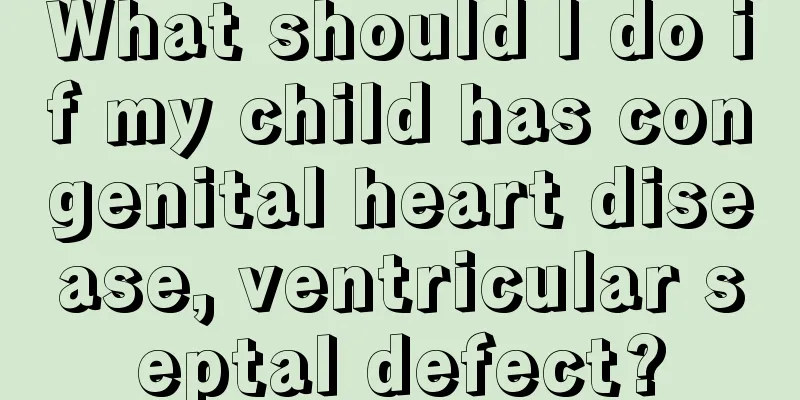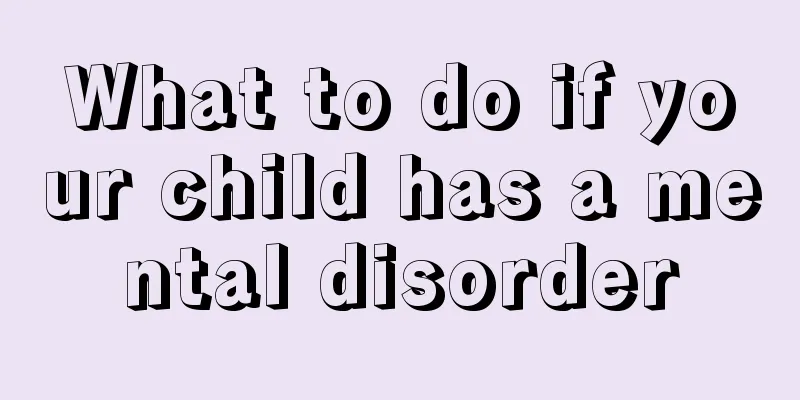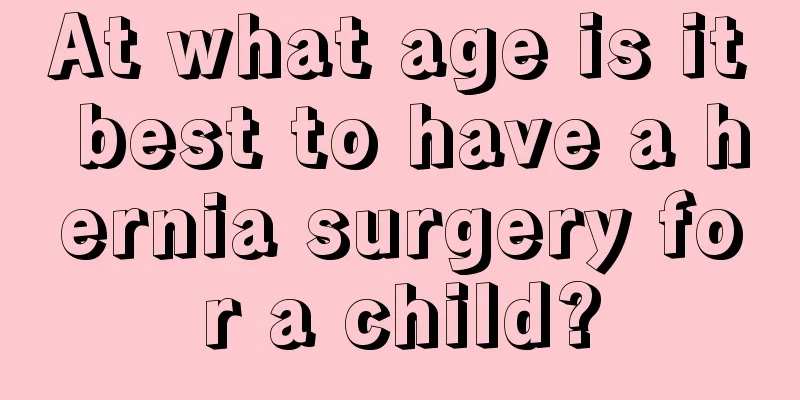What should I do if my child has congenital heart disease, ventricular septal defect?

|
Congenital heart disease is a disease that often occurs in newborns. Most of the causes are related to some improper behaviors of pregnant women during pregnancy, such as drug abuse. The symptoms of congenital heart disease vary, and ventricular septal defect is one of them. So how should newborns with this heart disease be treated? First of all, ventricular septal defect is the most common congenital heart disease. Ventricular septal defect can be divided into small, medium and large defects according to the size of the defect, and can be divided into mild, moderate and severe according to the nature of the disease. If the defect is less than 0.5 cm and the left-to-right shunt is mild, the child's clinical symptoms will be relatively mild. If the defect is larger than 0.5cm, there will be a significant left-to-right shunt, leading to increased pressure in the left atrium and ventricle, and then developing into pulmonary hypertension, which is very dangerous. Treatment must be given promptly. Secondly, the treatment method: There are many types of treatment, including surgical treatment, interventional treatment and drug treatment. The choice of treatment and when is the most appropriate time for surgery should be based on the condition of the child, and the cardiologist should make recommendations based on the specific circumstances of the child. For patients with no shunt or left-to-right shunt, timely surgery can produce good results and a better prognosis. For patients with right-to-left shunt or complex malformations, and those with more serious conditions, surgery is complex and difficult. Some patients cannot be completely corrected due to imperfect development of certain heart structures, and can only undergo palliative surgery to alleviate symptoms and improve quality of life. Third, interventional treatments are roughly divided into two categories: one is to use balloon dilation to relieve the stenosis of blood vessels and valves, and the other is to use special occluders made of various memory metal materials to block unnecessary defects. Due to the advancement of medical technology and the continuous research and improvement of materials and processes, interventional therapy has been further developed in clinical applications at home and abroad. It not only avoids the risks and trauma of open-chest surgery, but also shortens hospitalization time and allows for rapid recovery. It is a very effective treatment method. Interventional treatment has partially replaced but not completely replaced surgical thoracotomy, and this technology has strict indications. These are the relevant information about ventricular septal defect, a congenital heart disease in children. With the continuous advancement of medical technology, congenital heart disease can be treated very effectively. If a newborn is found to have symptoms of congenital heart disease, he must go to the hospital for examination in time. If surgical treatment is required, it must be carried out in time. |
<<: Is it normal for children to change their teeth at the age of five and a half?
>>: What are the symptoms of severe pneumonia in children?
Recommend
Is it effective to use massage to reduce fever when children have a fever?
When a child has a fever, physical cooling should...
What should I do if my child has tracheal inflammation?
Bronchitis is a very common disease when babies a...
Should the legs of a newborn be bound?
We all know that many children’s legs will be tie...
Children with low white blood cell count and recurrent fever
Children's constitution is relatively weak, s...
What causes lower respiratory tract infection in children?
Children have weaker immunity and are therefore m...
What to do if your baby has eye inflammation
Newborn babies have poor resistance, and their ey...
What to do if the child keeps crying
It is very normal for children to cry in life. Bu...
Which department should I go to for breast development in children?
In our lives, many children are particularly pron...
What to do if your three-year-old child has allergies
Children's resistance is weaker than that of ...
One-year-old baby with allergic rhinitis
It is not a big deal for adults to have rhinitis,...
What is the treatment for diarrhea in babies?
Autumn is coming soon. As the weather turns coole...
What should I do if my child's transaminase is high?
Parents should pay attention to children's hi...
What’s going on if my baby’s eyes are red and have eye mucus? Experts will tell you
If you find that your baby's eyes are red and...
Why does the baby's soles sweat?
Although the baby's body temperature is gener...
What to eat for children with anemia
In fact, there are many different types of anemia...









